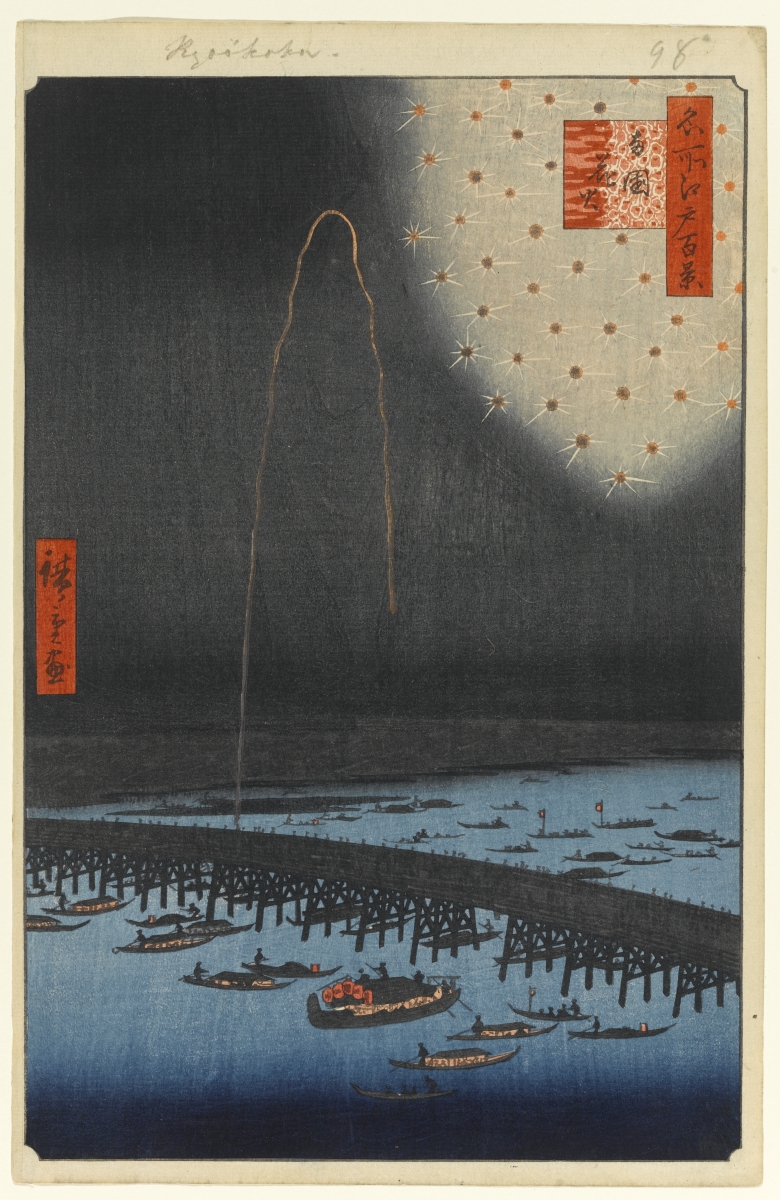|
Sumidagawa
The is a river that flows through central Tokyo, Japan. It branches from the Arakawa River at Iwabuchi (in Kita-ku) and flows into Tokyo Bay. Its tributaries include the Kanda and Shakujii rivers. It passes through the Kita, Adachi, Arakawa, Sumida, Taito, Kōtō and Chūō wards of Tokyo. What is now known as the "Sumida River" was previously the path of the Ara-kawa. Toward the end of the Meiji era, the Ara-kawa was manually diverted to prevent flooding, as the Imperial Palace in Chiyoda is nearby. Art Sumida Gawa pottery was named after the Sumida River and was originally manufactured in the Asakusa district near Tokyo by potter Inoue Ryosai I and his son Inoue Ryosai II. In the late 1890s, Ryosai I developed a style of applied figures on a surface with flowing glaze, based on Chinese glazes called "flambe." Sumida pieces could be teapots, ash trays, or vases, and were made for export to the West. Inoue Ryosai III, grandson of Ryosai I, moved the manufacturing site ... [...More Info...] [...Related Items...] OR: [Wikipedia] [Google] [Baidu] |
Sumidagawa Fireworks Festival
The Sumidagawa Fireworks Festival (隅田川花火大会, ''Sumidagawa Hanabi Taikai'') is an annual fireworks festival held on the last Saturday in July, over the Sumidagawa near Asakusa. The Sumidagawa Hanabi Taikai follows the Japanese tradition of being a competition between rival pyrotechnic groups. It is a revival of celebrations held in the Edo period, and annually attracts close to a million celebrants. Similar events are held at the same time of year at many other sites throughout Japan. History The tradition of the Sumidagawa Fireworks Festival can be traced back to Kyōhō famine in 1732, when fireworks were launched as part of festivals for the dead. The country was in an economic crisis, and the people suffered from famine and disease to a greater degree than normal. Thus, the rituals and celebrations in which the fireworks took part played multiple roles. These were mourning observances for the dead, as well as celebrations of life, and entertainment for the pover ... [...More Info...] [...Related Items...] OR: [Wikipedia] [Google] [Baidu] |
Curlew River
''Curlew River – A Parable for Church Performance'' (Op. 71) is an English music drama, with music by Benjamin Britten to a libretto by William Plomer. The first of Britten's three 'Parables for Church Performance', the work is based on the Japanese ''noh'' play ''Sumidagawa'' (Sumida River) of Juro Motomasa] (1395–1431), which Britten saw during a visit to Japan and the Far East in early 1956. Beyond the ''noh'' source dramatic material, Britten incorporated elements of ''noh'' treatment of theatrical time into this composition. ''Curlew River'' marked a departure in style for the remainder of the composer's creative life, paving the way for such works as ''Owen Wingrave'', ''Death in Venice'' and the Third String Quartet. Plomer translated the setting of the original into a Christian parable, set in early medieval times near the fictional Curlew River, in the fenlands of East Anglia. Peter F. Alexander has investigated in detail the librettist's contribution to the work, ... [...More Info...] [...Related Items...] OR: [Wikipedia] [Google] [Baidu] |
